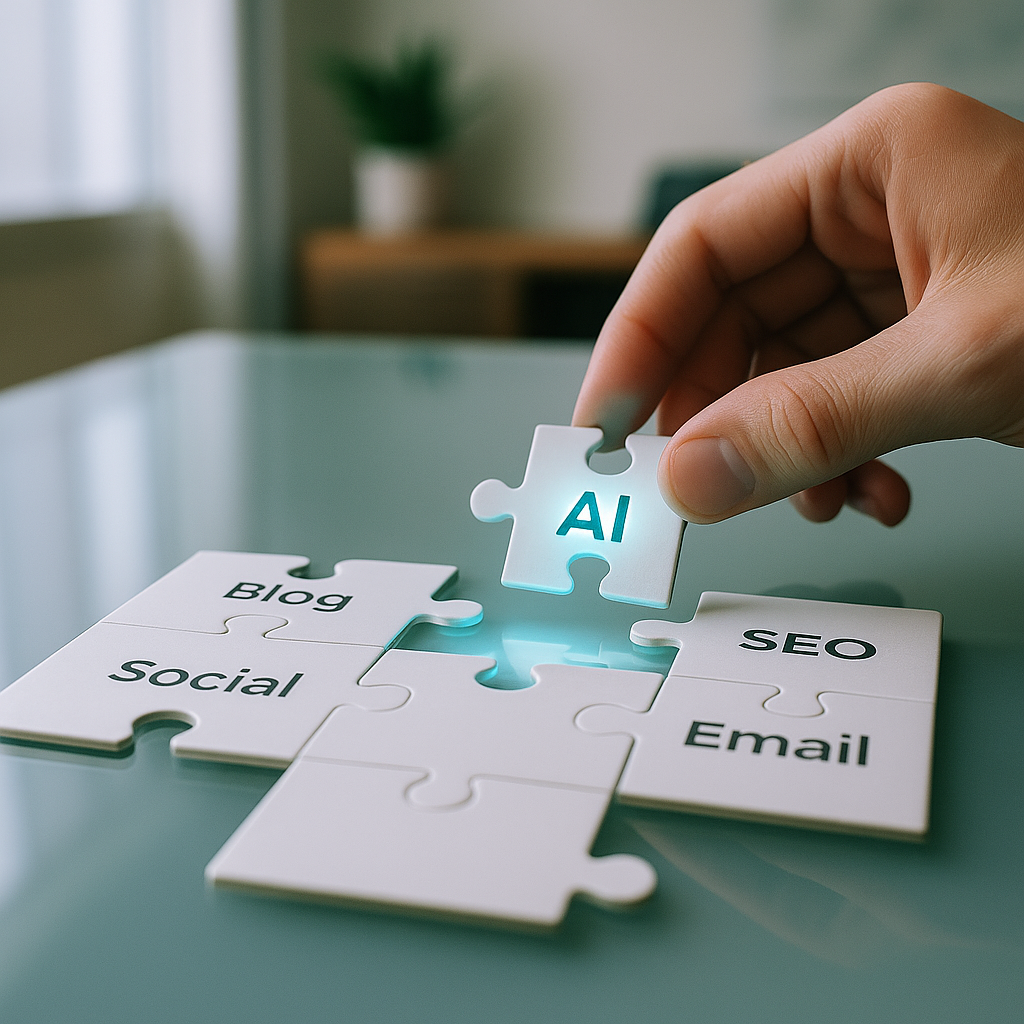Your cart is currently empty!

How do I align AI content with my marketing goals?
•
Understanding the Role of AI in Modern Marketing
Artificial Intelligence (AI) has become a cornerstone of digital marketing, enabling brands to scale content production, personalize customer experiences, and make data-driven decisions faster than ever. But while AI tools can generate content quickly, aligning that content with your marketing goals requires strategy, oversight, and a deep understanding of your brand’s objectives.
Defining Clear Marketing Goals Before Using AI
Before diving into AI-generated content, it’s essential to define your marketing goals. Are you aiming to increase brand awareness, drive traffic, generate leads, or boost conversions? Each goal demands a different content approach. For example, top-of-funnel content for awareness might focus on educational blog posts, while bottom-of-funnel content for conversions could include product comparisons or customer testimonials.
Why is goal-setting crucial before using AI? Because AI models are only as effective as the prompts and data you feed them. Without clear direction, AI may produce content that’s generic or misaligned with your brand’s purpose.
Mapping AI Content to the Customer Journey
One of the most effective ways to align AI content with your marketing goals is by mapping it to your customer journey. This involves understanding the stages your audience goes through—from awareness to consideration to decision—and tailoring AI-generated content to meet their needs at each point.
- Awareness Stage: Use AI to generate blog posts, social media content, and infographics that introduce your brand and educate your audience.
- Consideration Stage: Create comparison guides, case studies, and email sequences that help prospects evaluate your offerings.
- Decision Stage: Develop AI-assisted landing pages, testimonials, and personalized offers to drive conversions.
Choosing the Right AI Tools for Content Creation
There are dozens of AI tools available in 2025, each with unique strengths. Some specialize in long-form content, while others are designed for social media, email marketing, or SEO optimization. Choosing the right tools depends on your goals and content formats.
Popular AI content tools in 2025 include:
- Jasper: Great for blog posts, ad copy, and email campaigns.
- Copy.ai: Ideal for quick content ideas and social media captions.
- Surfer SEO: Helps optimize AI content for search engines.
- Writer.com: Focuses on brand voice consistency and enterprise-level compliance.
Evaluate tools based on ease of use, integration with your CMS, and the ability to customize tone and style.
Ensuring Brand Voice and Consistency with AI
One of the biggest challenges with AI-generated content is maintaining a consistent brand voice. Without human oversight, AI can produce content that feels robotic or off-brand. To prevent this, create detailed brand guidelines and feed them into your AI tools whenever possible.
Tips for maintaining brand voice with AI:
- Train AI models using your existing content as examples.
- Use style guides and tone-of-voice documents to inform prompts.
- Always review and edit AI-generated content before publishing.
- Assign human editors to ensure quality and alignment.
Measuring the Impact of AI Content on Marketing KPIs
To ensure your AI content is driving results, you need to measure its performance against key marketing metrics. These may include:
- Traffic: Are AI-generated blog posts attracting more visitors?
- Engagement: Are readers spending more time on your site?
- Conversion Rate: Is AI content leading to more sign-ups or purchases?
- SEO Rankings: Are your pages ranking higher in search results?
Use tools like Google Analytics, HubSpot, and SEMrush to track these metrics and adjust your strategy accordingly.
Common Pitfalls to Avoid When Using AI for Content
While AI can be a powerful ally, it’s not without risks. Here are some common mistakes marketers make when using AI for content creation:
- Over-reliance on automation: AI should augment, not replace, human creativity and strategy.
- Ignoring data quality: Poor input leads to poor output. Always use accurate, up-to-date data.
- Neglecting personalization: AI can personalize content, but only if you segment your audience properly.
- Skipping the editing process: AI content should always be reviewed by a human editor for accuracy and tone.
Future-Proofing Your AI Content Strategy
As AI continues to evolve, so should your content strategy. Stay ahead by investing in training, experimenting with new tools, and continuously refining your approach. Consider building a content ops team that includes both marketers and data scientists to bridge the gap between creativity and technology.
What trends should you watch in 2025?
- Hyper-personalization: AI will enable even more granular targeting and content customization.
- Voice and video content: AI tools are expanding beyond text to generate multimedia content.
- Ethical AI use: Transparency and responsible AI practices will become increasingly important.
Conclusion: Aligning AI Content with Purpose
AI is a game-changer for content marketing, but only when used strategically. By defining clear goals, choosing the right tools, maintaining brand voice, and measuring performance, you can ensure that your AI-generated content not only saves time but also drives meaningful results. As we move deeper into 2025, marketers who align AI with their broader objectives will gain a significant competitive edge.
Leave a Reply